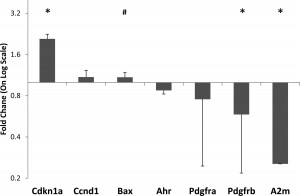Although our study did not look closely at any changes in minute ventilation, there seemed to be no significant modifications before and during oxygen administration in respiratory rate. Hyperoxia associated with hypercarbia occurring in asthma exacerbations, and especially without any evidence of respiratory suppression, would be more easily explained by the regional release of hypoxic pulmonary vasoconstriction.
This factor had a major role in determining V/Q matching, as V/Q inequality worsened considerably after administration of 100% oxygen. This has been shown in patients with acute asthma receiving ventilation and not receiving ventilation; therefore, patients with most severe baseline condition probably have more hypoxic vasoconstriction, and they had the greatest increase in PaC02 while breathing 100% oxygen.
Our trial sample presented the typical features of severe adult asthmatic patients when they presented for care to an emergency department on average: a mean level of PEFR of 41% of predicted, a mean age of 38 years, and a female/male ratio of 2:1. Finally, 76% of our patients presented the most characteristic arterial blood gas pattern: mild-to-moderate hypoxemia (range, 58 to 97 mm Hg) along with hypocapnia (range, 28 to 39 mm Hg).
In summary in this randomized, controlled trial, we have confirmed previous observations that administration of 100% oxygen for 20 min significantly increases PaC02 and decreases PEFR as compared with administration of 28% oxygen. These observations strongly support Global Strategy for Asthma Management and Prevention recommendations that oxygen dose in severe acute asthma should be variable and should be based on achieving and maintaining target Sp02 values with a pulse oximeter > 92% for adults and 95% for children.
Because severe asthma may give rise to hypoxemia and (3-agonist therapy may worsen hypoxemia, monitoring therapy of acute asthma with pulse oximetry is ideal. The results should be used to control the administration and dose of oxygen therapy. In circumstances where acute asthma must be treated without pulse oximetry, a clinical judgment must be made as to whether oxygen therapy (if is available) is warranted to prevent life-threatening hypoxemia, despite its potential adverse effects. However, uncontrolled high-flow oxygen should be avoided.
Viagra Canada Store – www.acanadianhealthcaremall.com
